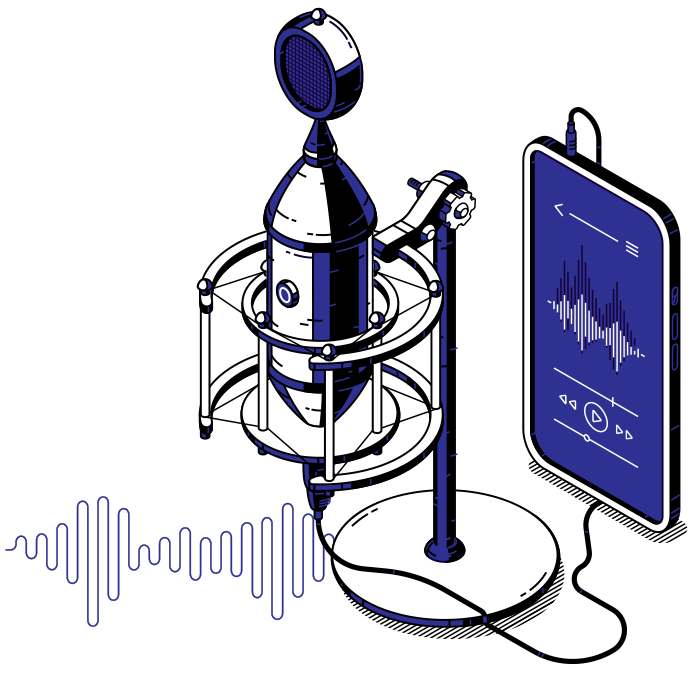
Podcast listeners are some of the most enthusiastic audiences in the media market— successful podcasts have listeners who keep returning week after week and month after month for new episodes. But what aspects of a higher education podcast draw these listeners in, and why do they willingly dedicate time to it even as they juggle school, work and life?
The topic choice does matter. Choosing a niche that connects with your target audience in terms of the value that it provides matters. However, there’s more to building a community than merely choosing the right topic.
People return to content because through it, they are able to tap into a community of like-minded people that share similar interests, ideas and goals. A podcast grows because its creators understand how to help listeners grow with them. Here are a few ways that you can connect with your audience and create community.
Interact with listeners during episodes

One of the best ways to build community is to make listeners feel involved. Being involved is especially important within the higher education space, where students and faculty are always looking for opportunities to meet others with similar interests and ideas.
Let your audience take an active role in shaping your content. For instance, you might consider featuring audience questions or experiences and responding to them during your episodes. This technique not only encourages your audience to interact with your actual podcast content, but also sparks connection and conversation outside of the podcast as well—you can use social media to have users share questions or experiences, etc.
Community lingo

One of the aspects of a community that ties its people together is lingo. On the surface, community lingo can be as simple as shared inside jokes and slang. But on a deeper level, lingo denotes shared experiences and knowledge. If you can tap into this network of shared meaning, you can strengthen the bond between not only yourself as a creator and your audience, but also the bond between audience members.
One thing to be weary about when using community lingo is going overboard. You don’t want to rely on it so heavily that newcomers to your podcast will be deterred. It’s all about balance.
Respond to messages and comments

It can be easy to ignore comments, DMs and emails, especially if there’s a lot of them. You might feel overwhelmed at the prospect of responding. Set aside time to reply thoughtfully. And in your responses, make sure to show some appreciation! Thank your listeners for taking the time to engage with your content. People who feel acknowledged are more likely to stick around than people who don’t.
If you seem to be getting messages that express similar concerns or sentiments, you might consider responding through a post rather than individually. This is a great way to not only show users that you care about their thoughts and ideas, but also show them that other people within your podcast community feel similarly.
Connect on social media
When used correctly, social media can be an excellent supplement to podcast content and can provide a space where audience members can discuss the latest episodes. Along with promotional content like trailers, you can also use social media as a space to expound upon concepts that you explore in your episodes.
You might pick a highlight from an episode to share with the audience and write a caption that. Encourage users to share their thoughts and opinions on the topics
Make a newsletter
Newsletters are effective for sharing a summary of all the ways that people can get involved in the podcast community. For instance, you might share social media posts from the podcast media pages, or updates on the guests that you’ve featured in your episode.
Additionally, newsletters give your audience a way to catch up on the content they’ve missed—you can include brief summaries of the latest episodes.
Experiment with the tone of your newsletter. While matching the tone of your newsletter to your podcast might be your first instinct, consider taking on a more informal tone in the newsletter. By using a more informal tone, you can show your audience that you’re just a person like them, and so much more than the edited and professional version of you that they might see (or hear) in podcast episodes. By letting down that barrier, you give the audience a chance to view you as a friend, not just a creator.
Circular relationships
When building a community around your podcast content, it’s important to not only encourage a strong relationship between yourself as a creator and your listeners, but also to create spaces for your listeners to build bonds with each other. Ultimately, observing relationships between your audience members and listening to feedback will help you to understand what your audience likes in terms of topics and guests.






